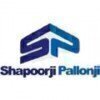Filter interviews by
Jacobs Engineering Group Piping Engineer Interview Questions and Answers
Jacobs Engineering Group Piping Engineer Interview Experiences
1 interview found
I applied via Company Website and was interviewed in Jun 2021. There were 4 interview rounds.
Interview Questionnaire
1 Question
- Q1. They asked about the project on which I have worked, so what you have done and doing should be properly known to you to answer such many questions on that ?
Interview Preparation Tips
Top trending discussions






Interview questions from similar companies

Piping Engineer Interview Questions & Answers
Megha Engineering & Infrastructuresposted on 28 Aug 2024
I applied via Referral and was interviewed in Feb 2024. There were 2 interview rounds.
(2 Questions)
- Q1. What is piping?
- Ans.
Piping refers to a system of pipes used to transport fluids or gases from one location to another.
Piping is used in various industries such as oil and gas, chemical, pharmaceutical, and construction.
It involves the design, fabrication, installation, and maintenance of pipes.
Pipes can be made of materials like steel, copper, PVC, or HDPE.
Piping systems can include fittings, valves, and other components to control the fl...
- Q2. What are the types of pipes used in piping?
- Ans.
Types of pipes used in piping include steel, copper, PVC, and HDPE.
Steel pipes: commonly used for high-pressure applications
Copper pipes: used for water supply lines
PVC pipes: lightweight and easy to install, commonly used for drainage systems
HDPE pipes: high-density polyethylene pipes used for underground gas and water lines
(1 Question)
- Q1. What is bevel angle of piping?
- Ans.
Bevel angle of piping refers to the angle formed between the prepared edge of the pipe and a plane perpendicular to the pipe axis.
Bevel angle is typically specified in degrees, such as 30° or 45°.
It is important for welding processes to ensure proper fit-up and joint strength.
Different bevel angles may be required based on the material being used and the welding procedure being employed.
Interview Preparation Tips

Piping Engineer Interview Questions & Answers
Worleyposted on 28 Jul 2024
(1 Question)
- Q1. Thickness calculation

I applied via LinkedIn and was interviewed in Apr 2023. There were 2 interview rounds.

(2 Questions)
- Q1. What type of Pressure Tests are conducted on valves?
- Ans.
Various pressure tests are conducted on valves including hydrostatic test, pneumatic test, and cryogenic test.
Hydrostatic test is conducted by filling the valve with water and pressurizing it to a specified pressure to check for leaks.
Pneumatic test involves using air or nitrogen to pressurize the valve and check for leaks or defects.
Cryogenic test is performed at low temperatures to ensure the valve can withstand extr...
- Q2. What are some of the most important safety considerations you make when designing piping systems?
- Ans.
Safety considerations in designing piping systems are crucial for preventing accidents and ensuring the integrity of the system.
Ensuring proper material selection to withstand the intended pressure and temperature conditions
Implementing proper support and restraint systems to prevent excessive stress and vibration
Incorporating adequate access points for maintenance and inspection
Following relevant codes and standards s...
Interview Preparation Tips

I applied via Referral and was interviewed before Feb 2023. There was 1 interview round.
(1 Question)
- Q1. Piping material Details and ASME codes

Piping Engineer Interview Questions & Answers
Shapoorji Pallonji Groupposted on 12 Jul 2021
I applied via Referral and was interviewed before Jul 2020. There were 4 interview rounds.
Interview Questionnaire
3 Questions
- Q1. Just about piping and safety related
- Q2. P&ID drawing related
- Q3. Hydrotest related
Interview Preparation Tips

Piping Engineer Interview Questions & Answers
Megha Engineering & Infrastructuresposted on 22 Feb 2024
I applied via Company Website and was interviewed in Aug 2023. There was 1 interview round.
(6 Questions)
- Q1. All related Piping and my experience related questions ASME standards codes
- Q2. What's Pinging, pipeline ASME CODE
- Ans.
Pinging in pipeline ASME CODE refers to the process of using ultrasonic testing to detect defects or anomalies in the pipeline.
Pinging involves sending ultrasonic waves through the pipeline to detect any abnormalities in the material or welds.
This technique is commonly used in the inspection of pipelines to ensure they meet the standards set by the ASME CODE.
Pinging helps identify potential issues such as cracks, corro...
- Q3. What's the use of corrosion coupon and it's applications
- Ans.
Corrosion coupons are used to monitor the rate of corrosion in a system and to determine the effectiveness of corrosion inhibitors.
Corrosion coupons are small metal strips or discs that are inserted into a system to measure the rate of corrosion over time.
They are made of the same material as the system being monitored, allowing for accurate assessment of corrosion rates.
Corrosion coupons are typically retrieved period...
- Q4. P&ID and PFD difference and full form
- Ans.
P&ID stands for Piping and Instrumentation Diagram, while PFD stands for Process Flow Diagram. They are both used in engineering to represent processes and systems.
P&ID shows the piping of the process flow system, including the equipment and instrumentation used.
PFD shows the overall flow of the process, including major equipment and control loops.
P&ID includes more detailed information like pipe sizes, materials, and ...
- Q5. CAD related test on basis isometric drafting and ON PIPING GAD also
- Q6. Types of instruments and application
- Ans.
Types of instruments used in piping engineering and their applications
Pressure gauges - measure pressure in pipes to ensure safe operation
Flow meters - measure the flow rate of fluids in pipes for monitoring purposes
Temperature sensors - monitor the temperature of fluids in pipes to prevent overheating
Level indicators - indicate the level of fluids in tanks connected to pipes for control purposes
Control valves - regula...
Interview Preparation Tips
Skills evaluated in this interview

I applied via Walk-in and was interviewed in Jul 2022. There were 2 interview rounds.

(2 Questions)
- Q1. Types of pipe support?
- Ans.
Pipe supports are used to hold and position pipes in various applications.
Pipe hangers: Used to suspend pipes from ceilings or walls.
Pipe clamps: Used to secure pipes to structural supports.
Pipe shoes: Used to support pipes on flat surfaces.
Spring supports: Used to absorb vibrations and provide flexibility.
Rigid supports: Used to provide fixed support to pipes.
Variable supports: Used to accommodate thermal expansion an
- Q2. How to do piping of pump ?
- Ans.
Piping of pump involves selecting appropriate pipe size, routing, and supporting the pipe to avoid stress and vibration.
Select pipe size based on pump flow rate and pressure requirements
Route the pipe to minimize friction loss and avoid obstacles
Support the pipe adequately to avoid stress and vibration
Use appropriate fittings and valves to connect the pump to the piping system
Consider the material of the pipe and fitti...
Interview Preparation Tips
Practice E3d software to qualify the tool test

I applied via Referral and was interviewed before Jun 2023. There was 1 interview round.
(2 Questions)
- Q1. Tell me about yourself
- Q2. Why have you chosen our company


WHAT IS NPHSA AND WHAT IS PIPING STANDARD AND WHAT IS EQUPIPMENT LAYOUT
(2 Questions)
- Q1. WHAERE IS YOU LIVE AND WHAT IS YOUR FAMILY BAGROUND
- Q2. SALLARY EXPECTATION AND YOUR EXPERIACE AND YOUR ID AND ADHARKARD CAHEAKED
Interview Preparation Tips
BE PREPEARED YOUR SLEFE AND CONFIDENT
Jacobs Engineering Group Interview FAQs
Tell us how to improve this page.
Jacobs Engineering Group Interviews By Designations
- Jacobs Engineering Group Graduate Engineer Trainee (Get) Interview Questions
- Jacobs Engineering Group Piping Designer Interview Questions
- Jacobs Engineering Group Process Engineer Interview Questions
- Jacobs Engineering Group CAD Technician Interview Questions
- Jacobs Engineering Group Civil Engineer Interview Questions
- Jacobs Engineering Group Design Engineer Interview Questions
- Jacobs Engineering Group Field Engineer Interview Questions
- Jacobs Engineering Group Lead Engineer Interview Questions
- Show more
Interview Questions for Popular Designations
- Piping Designer Interview Questions
- Senior Piping Engineer Interview Questions
- Piping Design Engineer Interview Questions
- Piping Supervisor Interview Questions
- Piping Stress Engineer Interview Questions
- Junior Piping Engineer Interview Questions
- Piping Foreman Interview Questions
- Pipeline Engineer Interview Questions
- Show more
Jacobs Engineering Group Piping Engineer Interview Process
based on 3 interviews
Interview experience
Piping Engineer Interview Questions from Similar Companies
Fast track your campus placements
Jacobs Engineering Group Piping Engineer Reviews and Ratings
based on 6 reviews
Rating in categories
|
Design Engineer
271
salaries
| ₹4.6 L/yr - ₹16.5 L/yr |
|
Senior Design Engineer
149
salaries
| ₹7.5 L/yr - ₹26 L/yr |
|
Piping Design Engineer
102
salaries
| ₹4.7 L/yr - ₹15 L/yr |
|
Piping Designer
97
salaries
| ₹3.7 L/yr - ₹15 L/yr |
|
Senior Engineer
71
salaries
| ₹9 L/yr - ₹21 L/yr |

AECOM

Bechtel

Fluor Corporation

Worley
- Home >
- Interviews >
- Jacobs Engineering Group Interview Questions >
- Jacobs Engineering Group Piping Engineer Interview Questions








